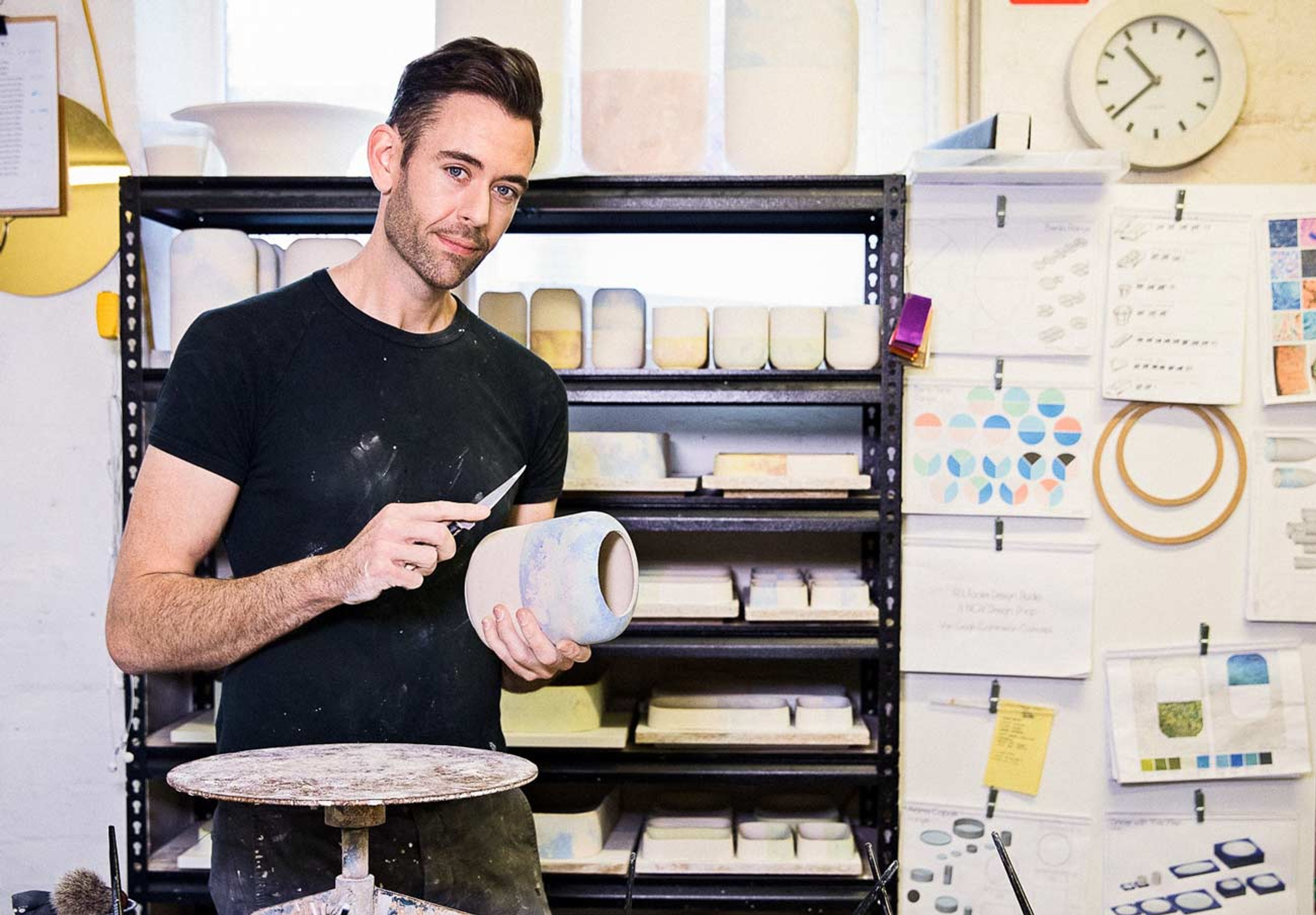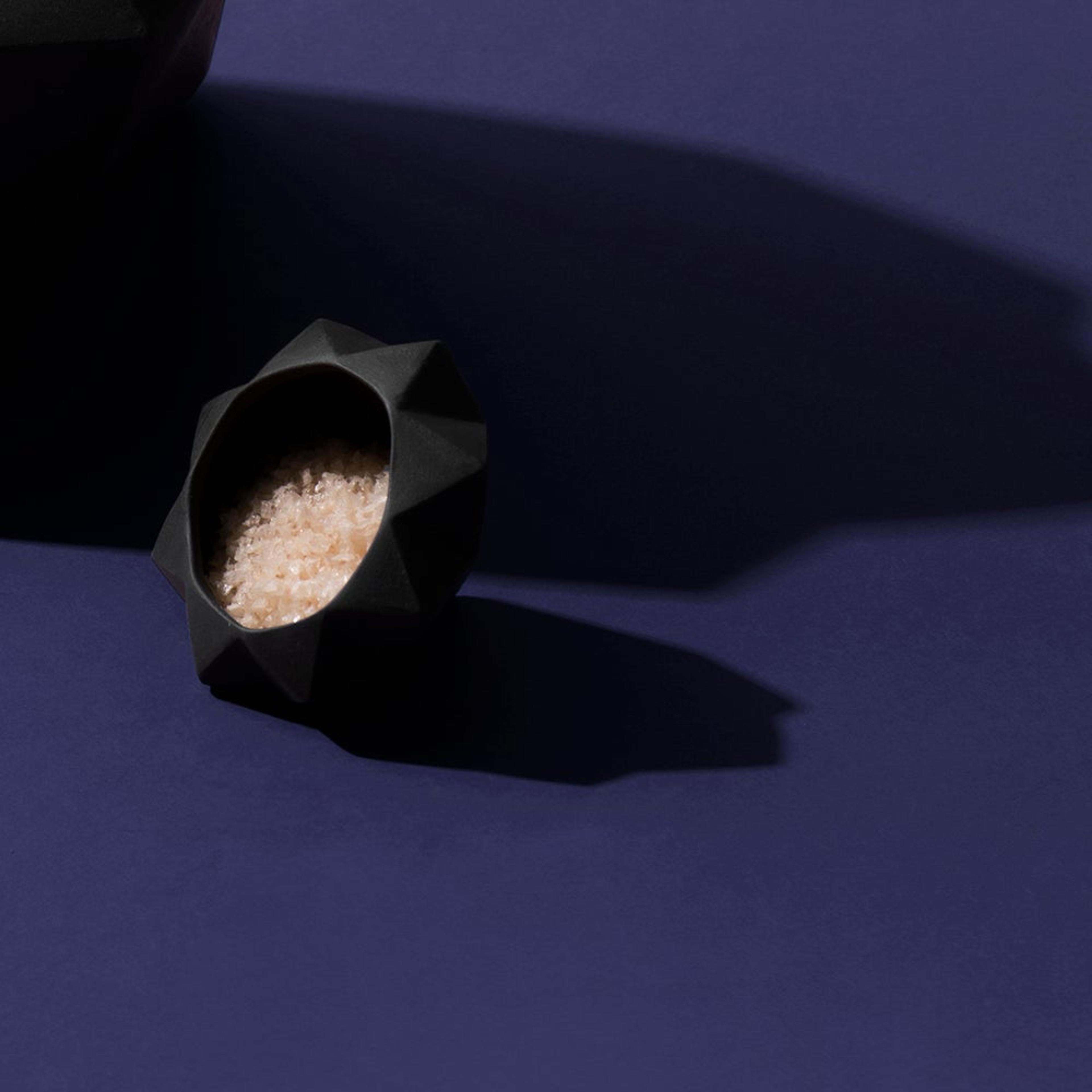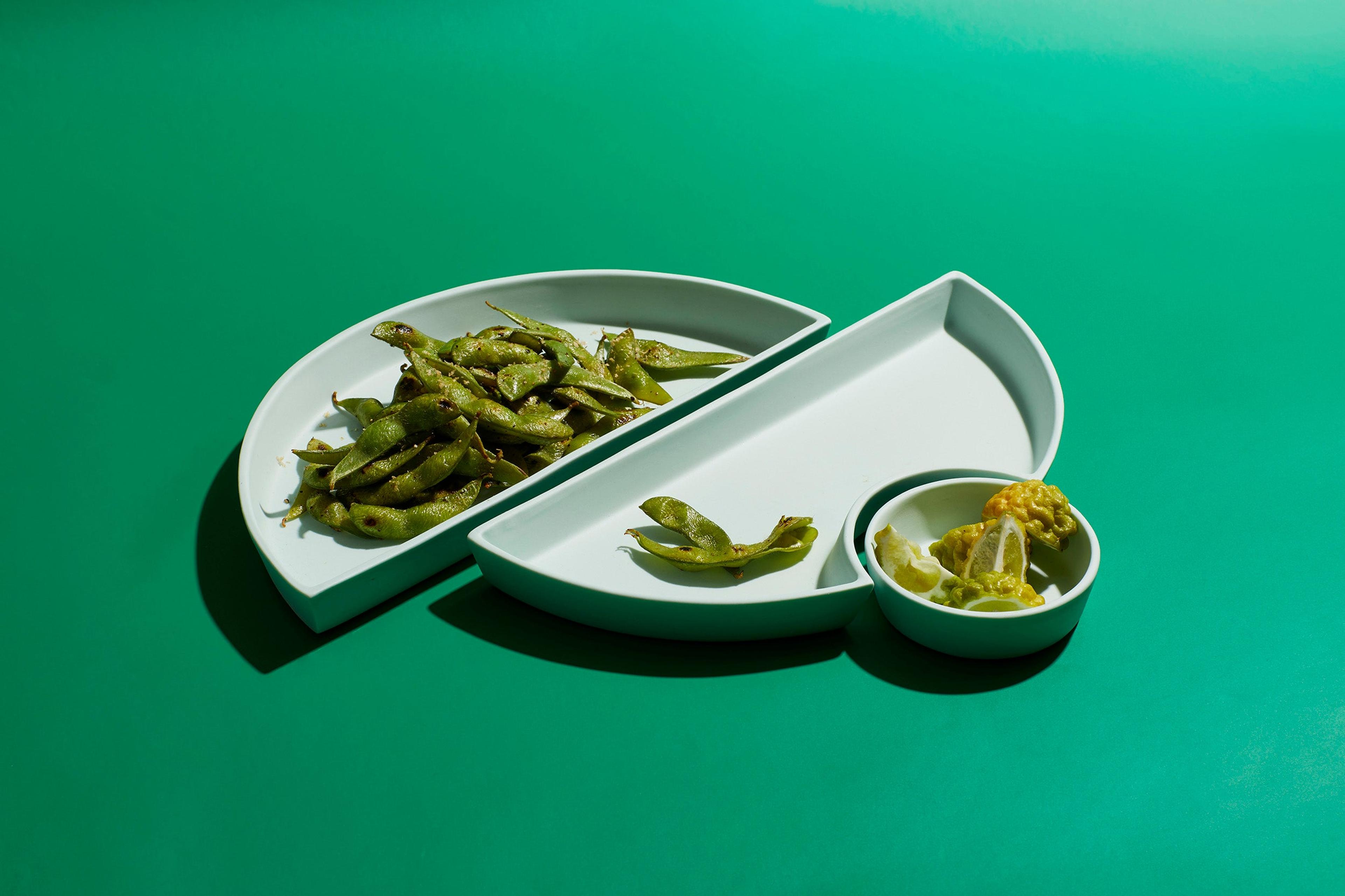R L Foote Design Studio
“I wanted to explore a number of things from new finishes, shapes and glazes that can add, change, inform the culinary experience”
R L Foote Design Studio
by Ryan L. Foote
Ryan L. Foote
R L Foote Design
Ryan Foote is the man behind R L Foote Design Studio, a Melbourne-based design studio that specializes in hand-made unique ceramic flatware and a host of contemporary interior design objects.
His unique designs has even garnered the attention of a Michelin star chef; Ryan’s passion for cooking has influenced the focus of his works – designing ceramics that can enhance the culinary experience. Thinking like a chef, Ryan often employs experimental techniques and ingredients to his ceramics and glazes to create a unique product which pushes new boundaries in ceramic design.
Ryan's Beginnings
Ryan cites an encounter with musical and theatre productions at his high school, where he found himself drawn to designing sets and stage pieces, inspiring him to “work at a large scale and across multiple mediums from sets to lighting”. It was when he undertook a Bachelor of Fine Arts at the Victorian College of the Arts, University of Melbourne, where he specialised in sculpture and spatial design, that led him to experiment with various materials such as bronze, timber and even digital film - an experience, he says, that taught him “creative and critical thinking and how to look at things in a different perspective”.
Upon graduating the Victorian College of the Arts, Ryan continued to foster a “multidimensional” art practice that spans installation art, set design, food design and graphic design. After working as a sculpture technician, lecturer, and set designer for fashion shows and musicals, in 2017 he made the leap towards opening his own design studio, R L Foote.
Prior to starting his studio, Ryan had worked as a designer, working on projects with a supporting team and budgets to help fund designs. Ryan contrasts this with his experience starting his own business, "When I decided to set up my own studio the biggest challenge was funding or lack of and going from have a team to having to do every thing yourself and feeling there are not enough hours in the day".
Design Philosophy
The design for Ryan’s ceramic flatware begins (and ends) with food: from the conception of an idea for a product right through to the end stages of its production. Ryan often thinks about the food and the experience he is creating a piece for, and that will drive the creative process on how he forms and finishes his ceramics. “I wanted to explore a number of things from new finishes, shapes and glazes that can add, change, inform the culinary experience,” Ryan added that “the shape of the forms can also influence a dining experience.”, this is evident in the Diamond Lab range, which was used in a food art pop up event.
Concepts for new tableware are born through a number of ways: Ryan may consider the space in which the product will be designed for, the food that will be eaten in it, or an already developed finish that will suit the plate itself. “Often I will think of a theme/space I would love to create,” he says, “then imagine the food and what I would love to cook and then design the plates around the recipe.”
Inspiration
For Ryan, inspiration “comes from anywhere” - be it places he’s visited, classical art, architecture, or food ingredients themselves. While there is no overarching art style that primarily influences his work, each product range has an individual influence behind it: the porcelain Bento range was for example his vision of a traditional Japanese bento box design, and the Bubble range took its inspiration from the lunar surface as it was designed for a Mid-Autumn Festival mooncake event.
Ryan's Design process
Ryan’s design process usually starts with a series of sketches - perhaps of a space, plate, or a recipe. The design then is processed digitally, through various editing software, until it starts to assume its final shape. Ryan will then bring his creation to life in his workshop, prototyping his designs and iterating until they're perfect.
Ryan regularly uses his 3D printer to create plastic prototypes of his designs before developing a ceramic prototype – this increases the speed in which he can experiment with new designs.
This melding of traditional pen-and-paper techniques and modern-day technology is something that opens up paths for creativity while keeping time and costs down for new designs.
The 3 kilns that inhabit Ryan’s workshop also play a big part in the creation of each ceramic product: one “huge” gas kiln which he uses for firing large batches of works, and two smaller ones which can be utilised for samples and “crystalline firings where precision is key”.
Ryan describes his dream workspace, "My dream space it actually consists of 3 spaces: one which is a workshop where things can be made, the other would be a commercial kitchen/food lab where I can test recipes and plating methods, and finally the third would be a studio space where I can have my computers, books and 3D printers". This layout is reflective of his creative thinking process of combining culinary experiments with his ceramic works.






